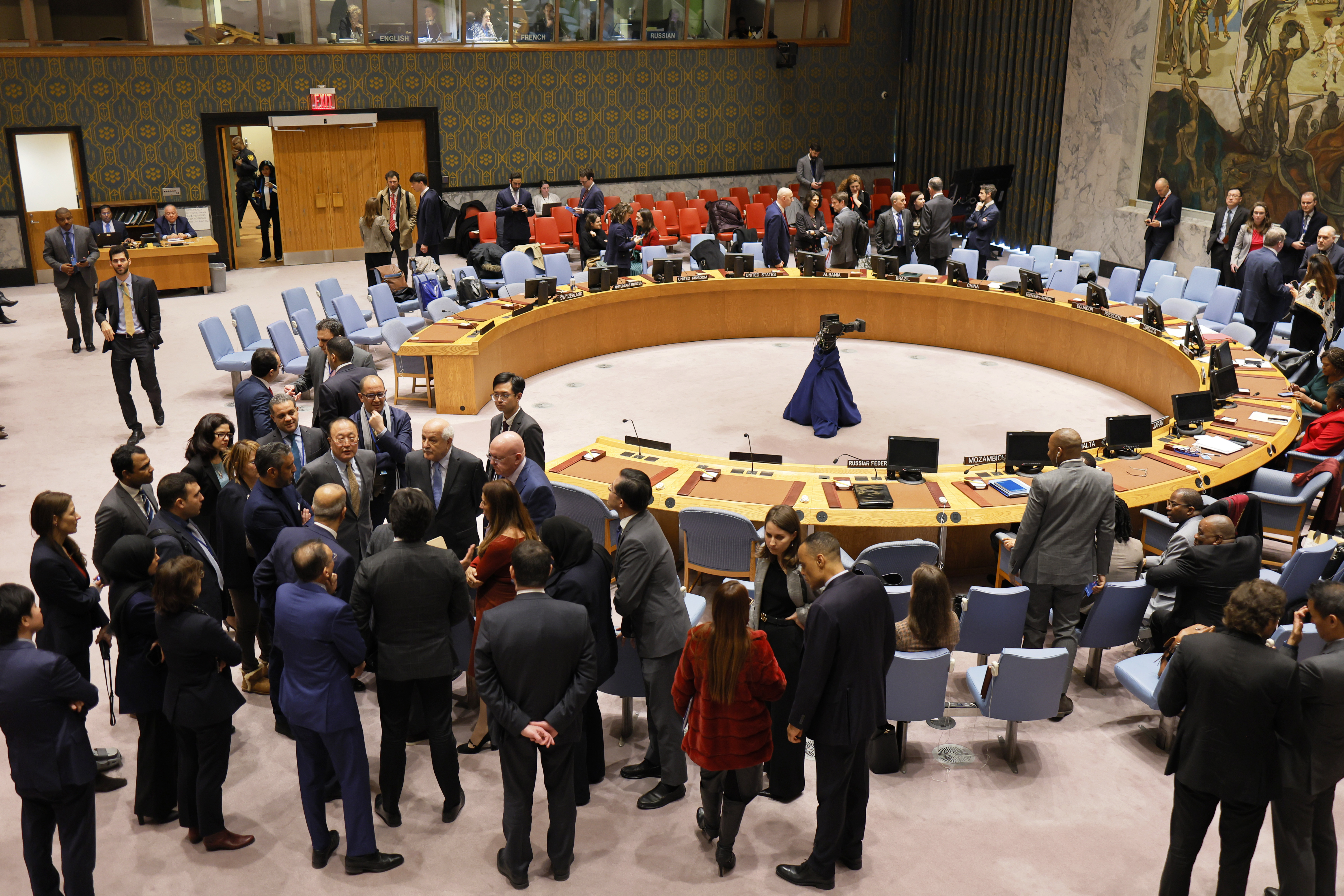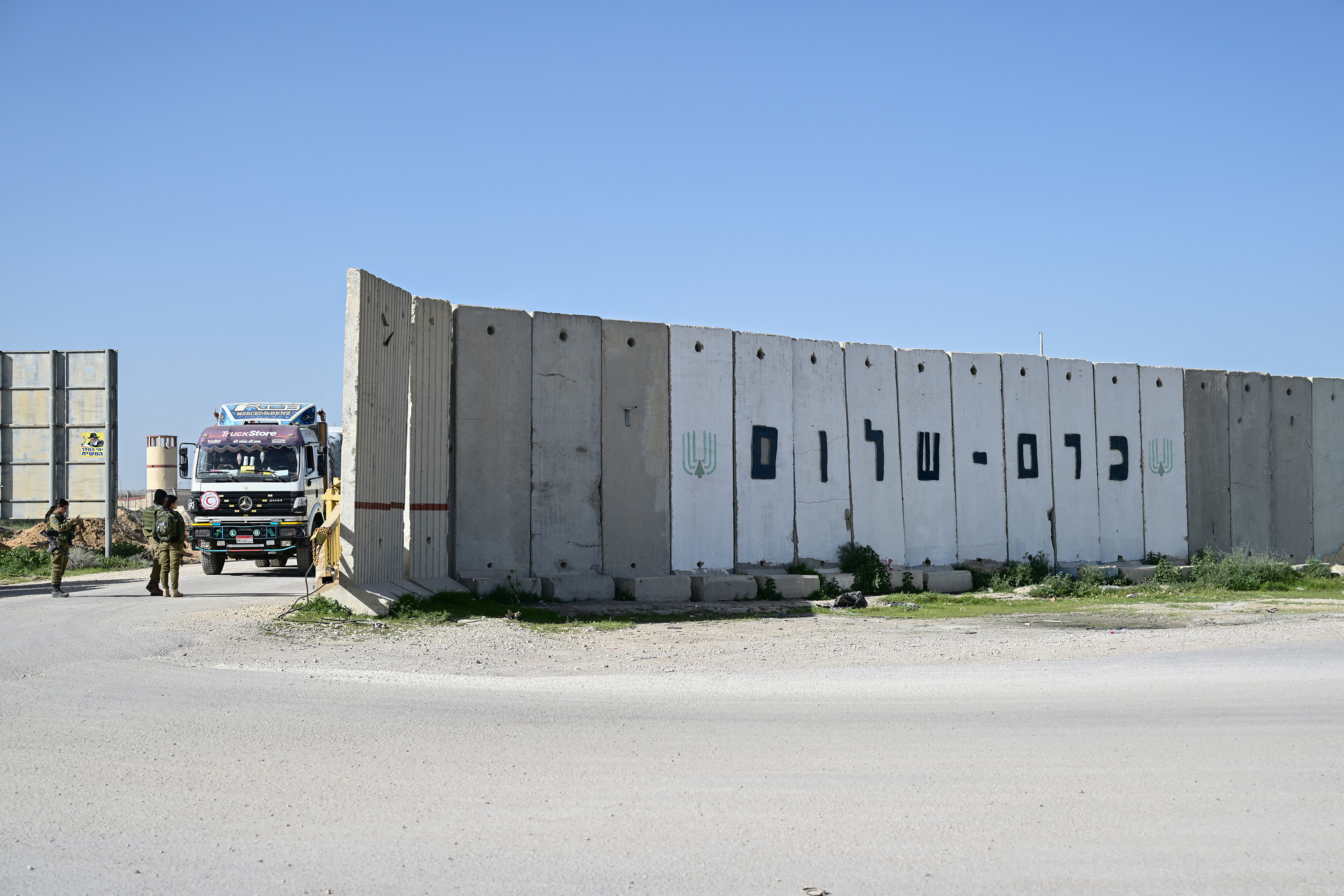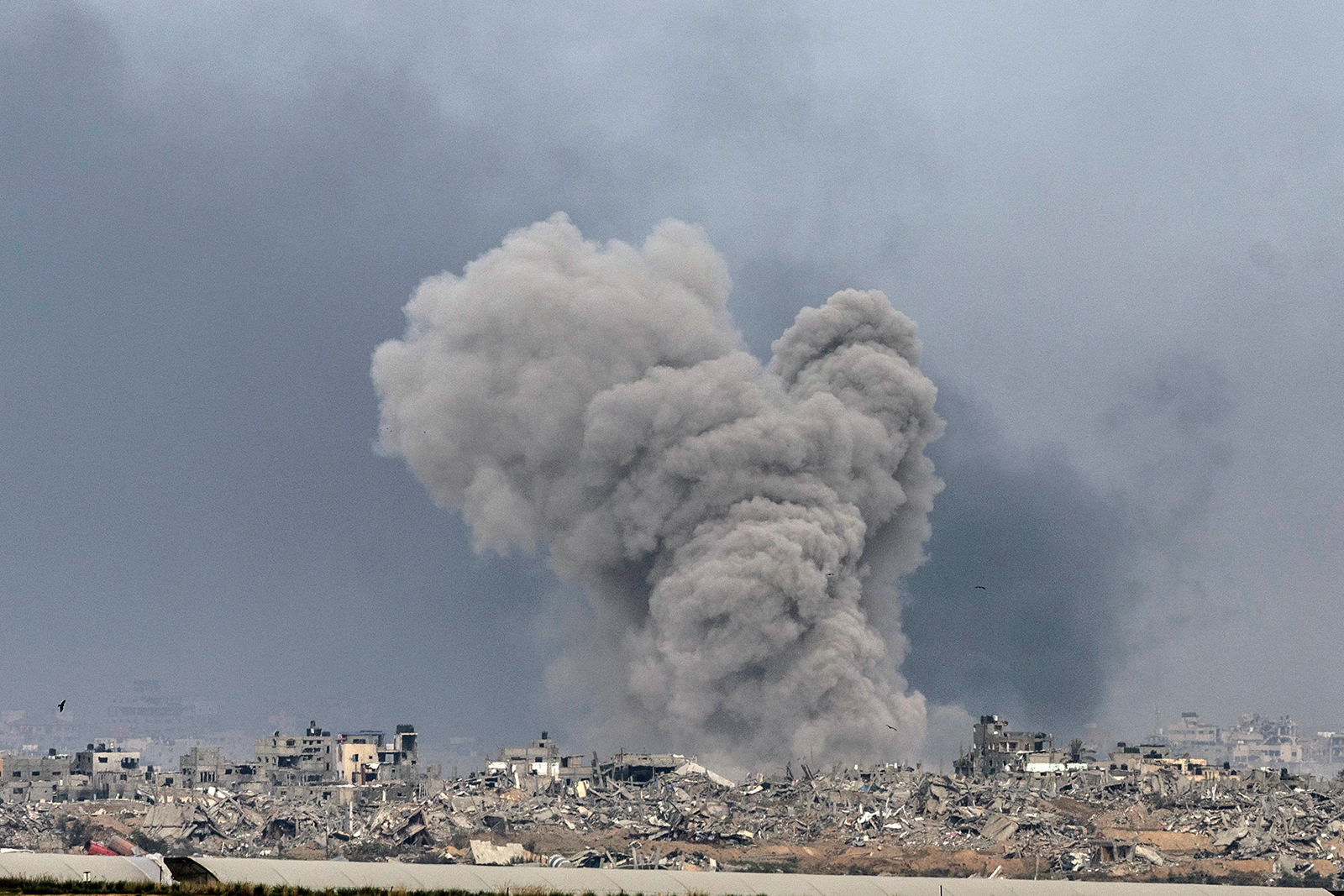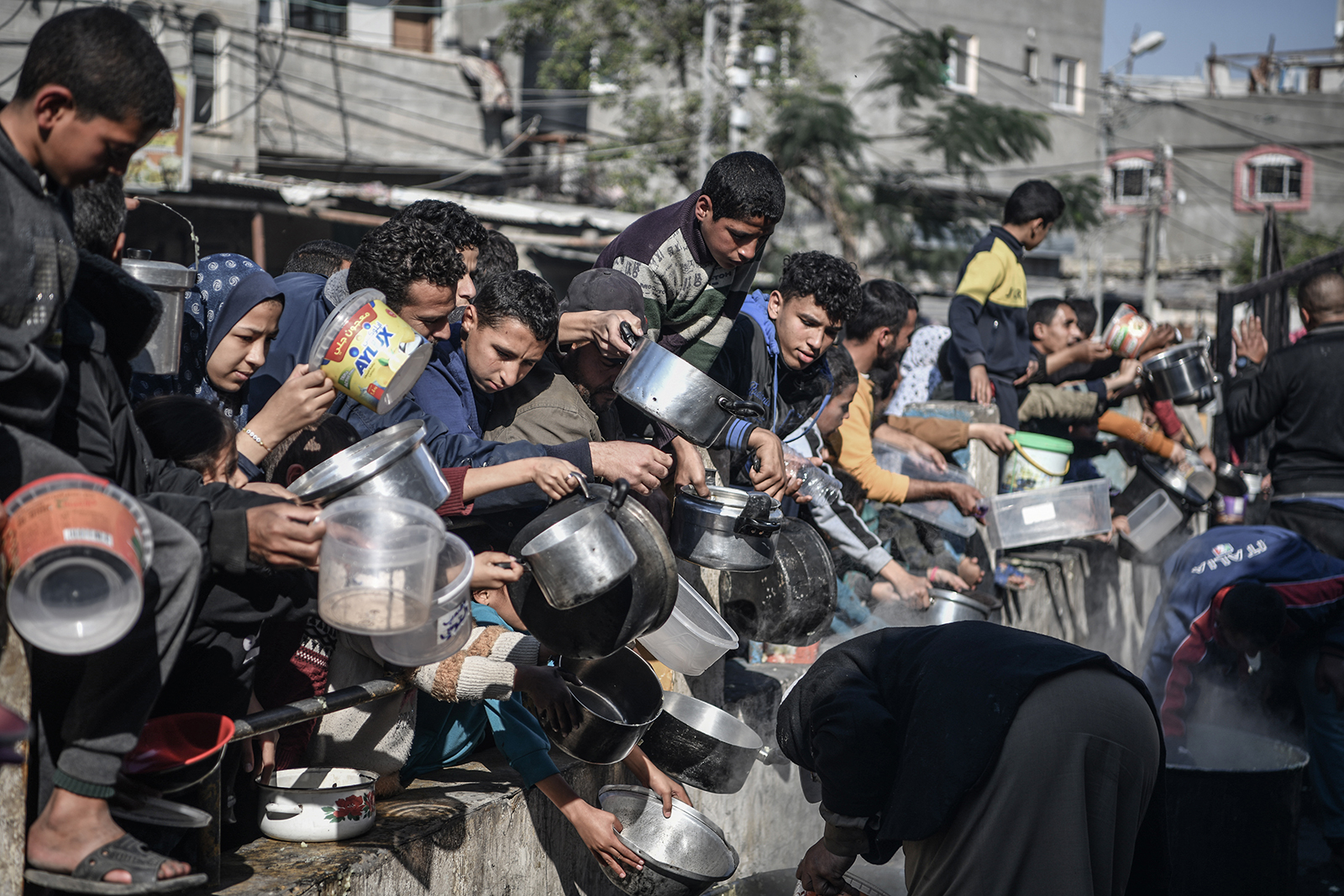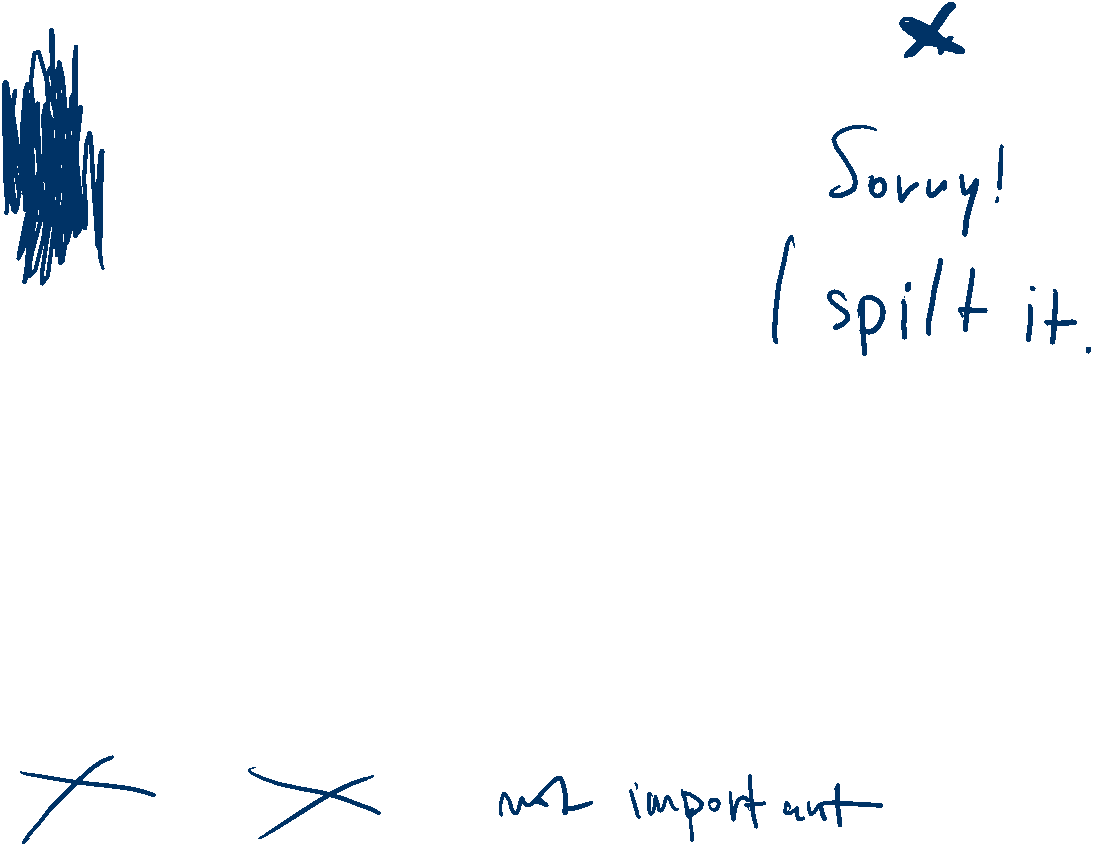
Israel indicated Friday that it is widening its military operation in Gaza as the United States says it is ready to support a United Nations Security Council resolution calling for suspension of fighting and increase in aid to the besieged enclave.
The Israel Defense Forces on Friday ordered the residents of the Al-Bureij refugee camp in Deir al-Balah and several other areas in central Gaza to move to shelters for safety, signaling a new focus of the ground offensive.
The military operation had so far been largely focused on northern Gaza and parts of the southern side of the strip.
Israeli military officials have said they believe they are close to defeating Hamas militants in Jabalya and Gaza City’s Shejaiya neighborhood, Hamas’ last remaining strongholds in northern Gaza.
Shortly after the warning on Friday, an Israeli airstrike hit the Al-Bureij refugee camp, a hospital spokesperson said.
At least three people were killed, and 10 others injured after the airstrike hit the camp, Dr. Khalil Al Daqran, a spokesperson at the Al Aqsa Martyrs Hospital, told CNN.
UN resolution: Meanwhile, the much-delayed vote on Gaza in the UN Security Council is expected Friday after US ambassador to the UN Linda Thomas-Greenfield said she was ready to support a resolution calling for an increase in aid to the strip.
Language calling for “urgent steps” to lay the groundwork “for a sustainable cessation of hostilities” was instrumental in the United States’ decision to support the resolution, a source told CNN. Negotiations have dragged on throughout the week as diplomats worked behind closed doors on the language.
The language of the now reads “urgent steps to immediately allow safe and unhindered humanitarian access, and also for creating the conditions for a sustainable cessation of hostilities,” according to the source.
It comes as the death toll in Gaza surpassed 20,000 since October 7, the Palestinian Ministry of Health in Ramallah said Friday.
The risk of famine in the Palestinian enclave is increasing every day that hostilities persist, a UN-backed food security agency has warned, as the World Health Organization said no hospitals are functioning in northern Gaza and the strip's entire health care system is "on its knees."
CNN’s Michael Rios, Priscilla Alvarez, Donald Judd and Alex Marquardt contributed previous reporting to this post.
